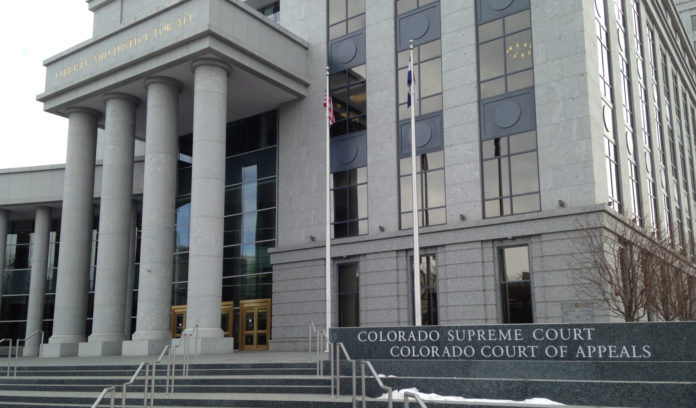
Editor’s Note: Law Week Colorado edits court opinion summaries for style and, when necessary, length.
According to the Colorado Supreme Court opinion, when Arnold Martinez stole a bicycle from C.T.’s garage, C.T. jumped in his car and gave chase. As Martinez allegedly tried to complete his getaway on the bike, C.T. first drove parallel to him and then cut him off. Martinez hit the car. When criminal charges against Martinez yielded a plea agreement, the Colorado District Court ordered Martinez to pay over $2,000 in restitution for the damage to C.T.’s car.
Martinez challenged this order, asserting the District Court erred in finding Martinez proximately caused the damage. On appeal, the parties disagreed about the appropriate standard of review, as did a division of the Colorado Court of Appeals. The majority reviewed the District Court’s proximate-cause determination for an abuse of discretion, but Judge J. Jones concurred arguing the appropriate standard of review is clear error.
The Colorado Supreme Court held clear error is the appropriate standard of review for evaluating a District Court’s determination of proximate cause for restitution. The state Supreme Court concluded the division erred by applying abuse-of-discretion review here.
Applying the clear error standard and after evaluation, the state Supreme Court affirmed the division’s judgment that Martinez was obligated to pay restitution.
County of Jefferson v. Stickle
According to the Colorado Supreme Court opinion, Beverly Stickle lost her balance and fell when she stepped down from a walkway to the parking lot surface at a parking structure adjacent to the Jefferson County Courts and Administration Building. She broke her arm and sued Jefferson County for damages allegedly sustained from the accident. The county moved to dismiss, arguing it was immune from suit under the Colorado Governmental Immunity Act because the parking structure is not a building and the condition Stickle alleges caused her injury was solely the consequence of the parking lot’s design. However, the state Supreme Court concluded the parking structure at issue is a building as that word is used in the CGIA and the dangerous condition Stickle alleges caused her fall isn’t attributable solely to the design of the parking structure.
In February 2018, Stickle parked her car on the upper level of the North Parking Structure at the Jefferson County Courts and Administration Building and entered the building to conduct business with a county agency. As she returned to her car, Stickle fell while stepping down from a walkway onto the surface of the parking area and suffered a compound fracture of her arm.
She sued the county under the Colorado Premises Liability Act, claiming the curb was poorly marked and thus constituted a dangerous condition that caused her injury. In bringing her suit, Stickle asserted the county wasn’t immune from her claim because the parking structure is a public building and the CGIA waives immunity for dangerous conditions of public buildings when caused by construction or maintenance rather than solely by the design of the building. The county moved to dismiss for lack of subject matter jurisdiction, arguing the parking structure isn’t a building, and the lot surface’s coloring was a design choice rather than a feature of construction or maintenance and therefore didn’t constitute a dangerous condition within the meaning of the CGIA.
The district court held a hearing pursuant to Trinity Broadcasting of Denver, Inc. v. City of Westminster to determine whether the County waived its immunity. Following that hearing, the court denied the county’s motion to dismiss. The court found the parking structure was a building, reasoning the structure “is made of concrete or masonry materials and is permanent”, the lower level “is surrounded by walls and appears to consist of permanent support columns” and the structure has electricity, lighting and a fire suppression system. The court further found “the surface of the walkway and the driving surface” created an optical illusion because they were “finished with the same color.” This mirage, according to the court, constituted a dangerous condition. The trial court found the county had waived its immunity under the CGIA.
The county filed an interlocutory appeal, and a division of the Court of Appeals affirmed. First, the division agreed with the district court the parking structure was a building. Additionally, the division rejected the County’s argument the curb illusion was solely a design choice. Instead, the division concluded the illusion of uniformity between the walkway and the parking surface “resulted from maintenance, at least in part.” Accordingly, the division concluded the county was not immune from suit.
The county petitioned the state Supreme Court for certiorari review, and it granted the petition.
After evaluation, the state Supreme Court found the County waived its immunity from suit. The parking structure in which Stickle was injured is a building as defined by the CGIA and the conditions of the facility that allegedly caused her injuries were the result, at least in part, of maintenance of that structure.

